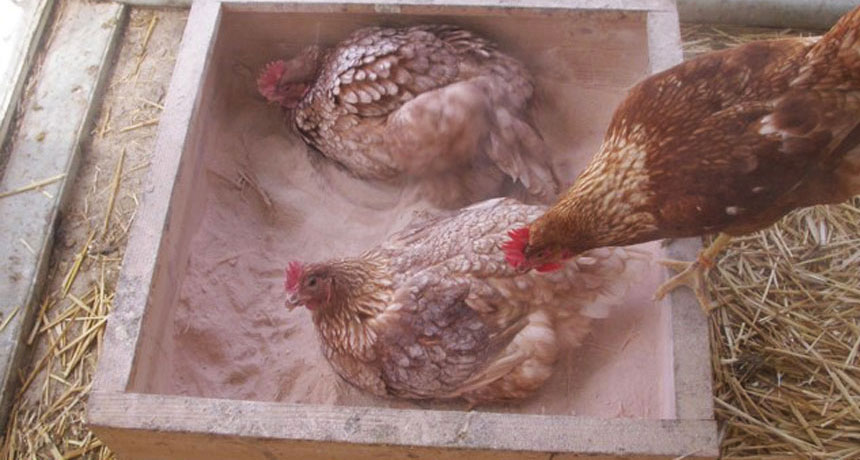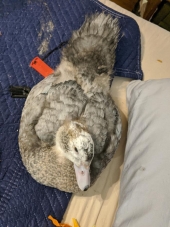
 4
4




 1
1















I make a Maple Syrup instructional movie! Check it out HERE
SKIP books, get 'em while they're hot!!! Skills to Inherit Property
See me in a movie building a massive wood staircase:Low Tech Lab Movie








 1
1




"The only thing...more expensive than education is ignorance."~Ben Franklin. "We can easily forgive a child who is afraid of the dark; the real tragedy of life is when men are afraid of the light." ~ Plato




“We can complain because rose bushes have thorns, or rejoice because thorn bushes have roses.” — Abraham Lincoln








ray Bunbury wrote:Thank you.
Antibiotics are sad because they are illegal to buy here. Only vet can use them and no vet will help chicken.
But if I can know the name of what's wrong, maybe I can get illegal help. but must be quiet about it.











 2
2




"The only thing...more expensive than education is ignorance."~Ben Franklin. "We can easily forgive a child who is afraid of the dark; the real tragedy of life is when men are afraid of the light." ~ Plato















 3
3




 2
2




"The only thing...more expensive than education is ignorance."~Ben Franklin. "We can easily forgive a child who is afraid of the dark; the real tragedy of life is when men are afraid of the light." ~ Plato




Carla Burke wrote:Did he say how many of this breed he's raised, before, without incident, .







 2
2








 10
10




It's never too late to start! I retired to homestead on the slopes of Mauna Loa, an active volcano. I relate snippets of my endeavor on my blog : www.kaufarmer.blogspot.com
 1
1




Bee Putnam
 3
3




Su Ba wrote:Ok, I'll take a stab at this. Just keep in mind that without examine the bird, this is going to be a wild guess.
The lack of neck feathers and the red pigmented skin appears to be normal since the birds have Turkin DNA. My own Turkins looked that this. The neck skin is thicker on the Turkins that other feathered breeds.
Your description of the blood under skin seems consistent with what is called a subdural hematoma. This is essentially a pool of "clotted" blood under the skin, often accompanied with edema (excess fluid in the tissues). The most common cause would be an injury. I can't begin to guess what that injury would be. Perhaps a fight. Perhaps a fall. Perhaps the hen slammed into something while trying to escape an attacker. Perhaps overly amorous attention from a rooster (roosters have been known to kill hen's, though not out of hatred).
Subdural hematomas usually don't cause problems, but I have seen some that became septic, thus killing the animal. Possibly this may be the case with this hen. Hard to tell.
 3
3




Devon Olsen wrote:
Su Ba wrote:Ok, I'll take a stab at this. Just keep in mind that without examine the bird, this is going to be a wild guess.
The lack of neck feathers and the red pigmented skin appears to be normal since the birds have Turkin DNA. My own Turkins looked that this. The neck skin is thicker on the Turkins that other feathered breeds.
Your description of the blood under skin seems consistent with what is called a subdural hematoma. This is essentially a pool of "clotted" blood under the skin, often accompanied with edema (excess fluid in the tissues). The most common cause would be an injury. I can't begin to guess what that injury would be. Perhaps a fight. Perhaps a fall. Perhaps the hen slammed into something while trying to escape an attacker. Perhaps overly amorous attention from a rooster (roosters have been known to kill hen's, though not out of hatred).
Subdural hematomas usually don't cause problems, but I have seen some that became septic, thus killing the animal. Possibly this may be the case with this hen. Hard to tell.
This is along the lines of my thoughts
The photos remind me of what I call a blood tumor, my eldest dog once had one that grew on his neck until it burst, from my reading he was fortunate that it burst externally, internal bursting almost certainly means death, perhaps that's what happened to this hen
I've also read that it usually develops from getting some foreign matter into a wound that doesnt find it's way out
He later developed(and still has) another large tumor on his leg, I thought it was another blood tumor and given the circumstances of my living arrangement at the time I attempted to lance and drain this before it burst on my roommates carpet like the previous one did, this turned out to be a terrible idea as there appeared to be no blood to drain and I caused the poor dog unnecessary pain
Moral of my story was that i would not attempt to perform surgery to drain the growth
If possible spend more time observing to see if there is an overly aggressive bird or a plethora of sharp debris that could become lodged in the bird
Another thought off the cuff, perhaps a blood vessel burst under the skin?
Devon Olsen wrote:
Su Ba wrote:Ok, I'll take a stab at this. Just keep in mind that without examine the bird, this is going to be a wild guess.
The lack of neck feathers and the red pigmented skin appears to be normal since the birds have Turkin DNA. My own Turkins looked that this. The neck skin is thicker on the Turkins that other feathered breeds.
Your description of the blood under skin seems consistent with what is called a subdural hematoma. This is essentially a pool of "clotted" blood under the skin, often accompanied with edema (excess fluid in the tissues). The most common cause would be an injury. I can't begin to guess what that injury would be. Perhaps a fight. Perhaps a fall. Perhaps the hen slammed into something while trying to escape an attacker. Perhaps overly amorous attention from a rooster (roosters have been known to kill hen's, though not out of hatred).
Subdural hematomas usually don't cause problems, but I have seen some that became septic, thus killing the animal. Possibly this may be the case with this hen. Hard to tell.
This is along the lines of my thoughts
The photos remind me of what I call a blood tumor, my eldest dog once had one that grew on his neck until it burst, from my reading he was fortunate that it burst externally, internal bursting almost certainly means death, perhaps that's what happened to this hen
I've also read that it usually develops from getting some foreign matter into a wound that doesnt find it's way out
He later developed(and still has) another large tumor on his leg, I thought it was another blood tumor and given the circumstances of my living arrangement at the time I attempted to lance and drain this before it burst on my roommates carpet like the previous one did, this turned out to be a terrible idea as there appeared to be no blood to drain and I caused the poor dog unnecessary pain
Moral of my story was that i would not attempt to perform surgery to drain the growth
If possible spend more time observing to see if there is an overly aggressive bird or a plethora of sharp debris that could become lodged in the bird
Another thought off the cuff, perhaps a blood vessel burst under the skin?
'Theoretically this level of creeping Orwellian dynamics should ramp up our awareness, but what happens instead is that each alert becomes less and less effective because we're incredibly stupid.' - Jerry Holkins
 5
5




 2
2




 3
3




"The only thing...more expensive than education is ignorance."~Ben Franklin. "We can easily forgive a child who is afraid of the dark; the real tragedy of life is when men are afraid of the light." ~ Plato
 1
1




 3
3




 3
3




"Study books and observe nature; if they do not agree, throw away the books." ~ William A. Albrecht
 1
1




Control
No acceptable field control strategies have been developed for darkling beetle control and therefore there has been little long term success in controlling the pest. Research in Australia have shown that the current standard industry insecticide is not effective when applied to broiler house floors, and this situation is exacerbated by strong and widespread insecticide resistance that occurs in broiler house beetle populations. More research are underway to develop an effective method to control darkling beetle in poultry houses.
 3
3




![Filename: thumb-ivermex.png
Description: [Thumbnail for thumb-ivermex.png]](/t/129101/a/95160/thumb-ivermex.png)







 1
1




We really don't know how much we don't know.
 2
2




Lina
https://catsandcardamom.com
 3
3




 3
3





 5
5




Chicken mites can be difficult pests to combat, their life cycle is difficult to thwart and they thrive in chicken coops. Diatomaceous earth, however, can be used as a natural chicken lice and mite treatment. DE works effectively to exterminate the lice and mites but remains a safe pesticide to have come in close contact with chickens; it targets both full-grown and gestating mites and lice. It's the absorbent properties of DE that allow it to dehydrate insects, and provide protection from future infestations.

Be joyful, though you have considered all the facts. ~Wendell Berry










 5
5




Be joyful, though you have considered all the facts. ~Wendell Berry
 6
6




 6
6




Visit Redhawk's soil series: https://permies.com/wiki/redhawk-soil
How permies.com works: https://permies.com/wiki/34193/permies-works-links-threads
 7
7




We can take care of our small piece of this world. Leave no footprints.

| I agree. Here's the link: http://stoves2.com |

